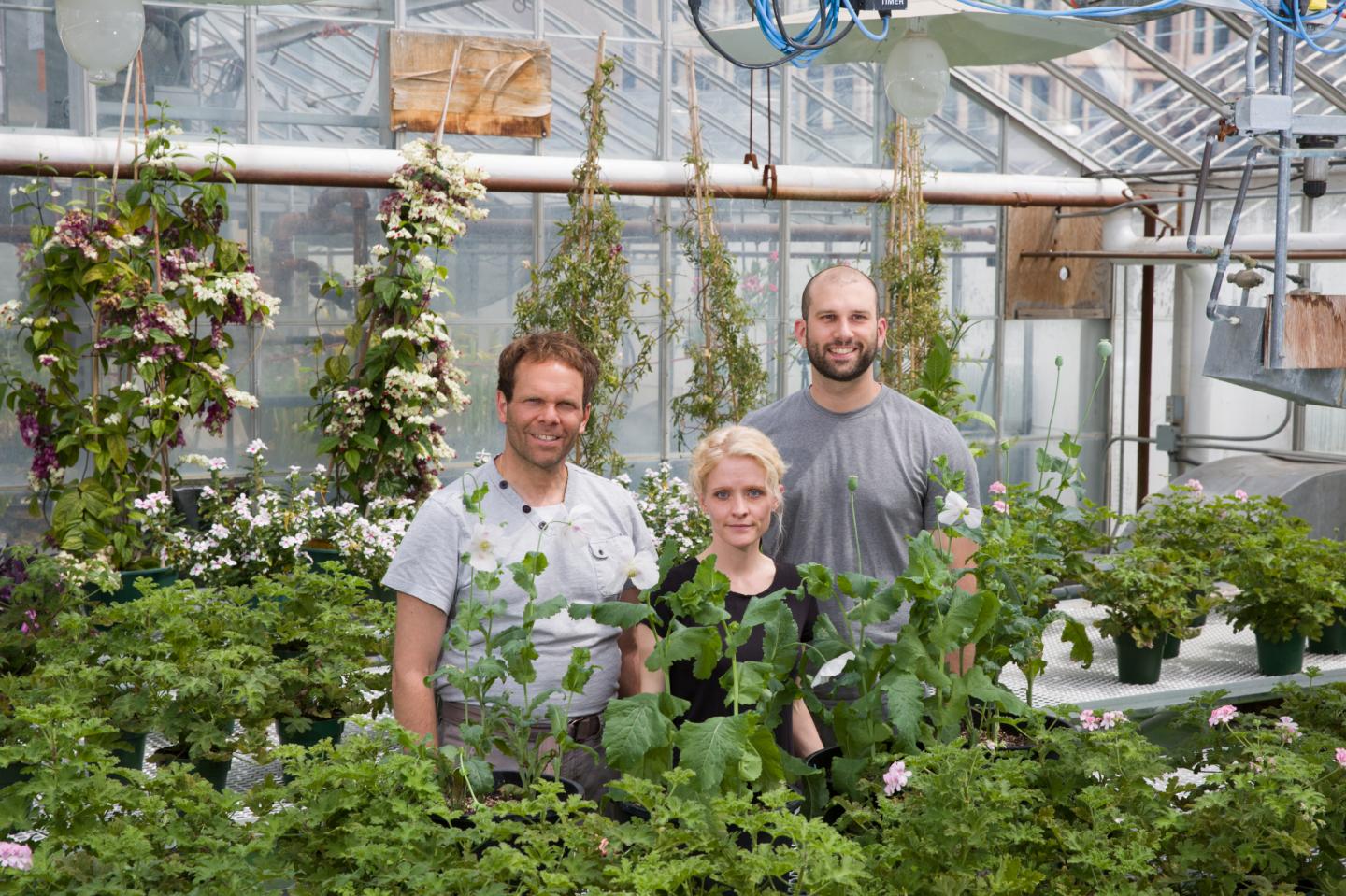
From left: Peter Facchini, professor in biological sciences, Jill Hagel, research associate, and Scott Farrow, PhD student. Many people who live in developing countries do not have access to the pain relief that comes from morphine or other analgesics. That's because opiates are primarily derived from the opium poppy plant (Papaver somniferum) and are dependent on the plant health and supply around the world.
After years of leading research on the opium poppy, University of Calgary scientists, Peter Facchini, his PhD student, Scott Farrow, and research associate Jill Hagel, have characterized a novel gene that encodes the gateway enzyme in the formation of morphine -which is to say, they've begun to understand how poppies synthesize the pain killing enzymes. The discovery opens the door to alternative production systems, aside from the plant itself.
Farrow, who is building on the insights Facchini and his team have been gathering over more than 23 years of research into opium poppies, is the lead author of a new paper that describes one of many significant discoveries arising from Facchini's research program.
"The gene we've isolated actually consists of a natural fusion between two ancestral genes, which encodes the gateway enzyme in the formation of morphine," says Farrow. "It's really interesting to see these fused genes in a metabolic pathway. It provides us with a new tool to search for something missing in other plants as well."
The findings were published July 1 in Nature Chemical Biology, and detail the missing step to morphine biosynthesis.
Next steps
Facchini says the isolation of this gene, among many other things, is a key step toward the reassembly of the pathway to morphine in microorganisms such as yeast.
"These efforts could lead to the development of alternative production systems for painkillers such as morphine, codeine and oxycodone," says Facchini, professor of biological sciences in the Faculty of Science and an internationally recognized expert on the opium poppy. "It's satisfying to know that my research has the potential to help people. But finding the last known step is really just the beginning of a new pathway of inquiry," Facchini says.
He likens this discovery to a box of Lego building blocks without a set of instructions - where the blocks are the genes along the pathway. One of the next steps will be to "write the instruction manual" based on still unknown information about how the genes work, which is crucial to reconstructing the pathway in another organism. "You can certainly snap a few pieces together, but you're not going to build a complex toy without a lot of knowledge and skill."
Source: University of Calgary
 Print Article
Print Article Mail to a Friend
Mail to a Friend
